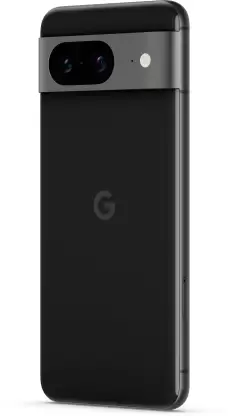Google Pixel 8: Fixing It in Post – A Smartphone That Masters the Art of Software

In the fast-evolving world of smartphones, the saying, “we’ll fix it in post,” holds new meaning with the Google Pixel 8. While other smartphones aim for perfection right out of the camera, the Pixel 8 embraces the philosophy of refining your shots and videos through ingenious software enhancements. In this article, we’ll explore how the Google Pixel 8 masters the art of post-production magic, making it a noteworthy contender in the competitive smartphone market.
Google Pixel 8: A Brief Introduction
The Google Pixel 8 series, which includes the standard Pixel 8 and the Pro model, continues Google’s tradition of blending cutting-edge hardware with groundbreaking software features. These smartphones are designed to cater to tech enthusiasts and photography aficionados, offering a compelling blend of capabilities that set them apart from the competition.
The Hardware Design
The exterior design of the Pixel 8 follows the familiar aesthetics of previous Pixel models. The camera circles now merge into a single prominent circle, housing powerful camera sensors. Notably, the Pro models offer a completely flat display, discarding the curved edges found in past iterations. The satin finish on the back remarkably conceals fingerprints, a relief for those who prefer a pristine look. However, there’s still room for improvement concerning dust accumulation around the camera bar.
The most significant hardware improvement comes in the form of stunning displays. The standard Pixel 8 boasts a 6.2-inch 1080P OLED display with thin bezels, while the Pixel 8 Pro steps up with a 6.7-inch LTPO display that reaches a dazzling maximum brightness of 2,400 nits. This level of brightness puts it on par with flagship devices from other manufacturers, solidifying the Pixel 8 series’ position in the smartphone elite.
Post-Production Magic: Camera Technology
The Google Pixel 8 series places a substantial focus on camera technology, where software takes center stage. Both models share a 50-megapixel primary sensor with an F1.7 lens, OIS, and fast autofocus. While the hardware certainly contributes to excellent image quality, it’s the software wizardry that elevates Pixel photography.
Google’s image processing combines multiple exposures to create HDR shots, strategically relights recognized faces, and employs noise reduction techniques. While this results in generally impressive photos, some may find instances of over-HDR and watercolor-like details in specific situations.
The Pixel 8 series introduces a plethora of features designed to address common photography and videography challenges. For instance, the Magic Eraser effortlessly removes unwanted elements from photos, while Face Unblur corrects blurry facial features. The Best Take feature simplifies group photos by allowing you to choose the best expression for each person from a burst of shots.
Video recording on the Pixel 8 series has seen notable improvements. Videos display less noise in shadows, benefit from quick autofocus, and offer a pleasant shallow depth of field for close-up subjects. Google’s AI-based features, such as Audio Eraser, help mitigate audio issues in recorded videos.
Notably, the Pixel 8’s Magic Editor steals the spotlight. This feature enables users to manipulate photos with incredible ease. You can remove objects, adjust positions, and even change the time of day in the picture. The AI behind Magic Editor attempts to generate the most convincing edits from your inputs, making it accessible to those who lack expertise in image editing.
Hardware, Battery Life, and Beyond
To maintain the processing power required for these software enhancements, the Pixel 8 series packs a capable Tensor G3 chip and a primary camera sensor shared across both models. The hardware impresses with its build quality, metal rails, and a satin-finished back, contributing to the devices’ flagship status.
The Pixel 8 series offers excellent battery life, with both models delivering six to eight hours of screen-on time on average. Standby time is decent, and overall battery performance stands out, though long-term durability remains a question.
One of Google’s core strengths lies in its software experience. The Pixel 8 series embraces Android 14, which breathes new life into older Pixel devices, extending their longevity and usability. Google’s focus on refining even the smallest details, such as haptics and call quality, further reinforces the smartphone’s status as a premium offering.
Affordability and Future-Proofing
The Pixel 8 series also makes a strong case for affordability, with a starting price of $700. This competitive pricing is combined with a promise of seven years of software updates, feature drops, security updates, and readily available spare parts. Google’s commitment to ongoing support ensures the Pixel 8 remains a wise investment for years to come.
Choosing the Right Model
When deciding between the standard Pixel 8 and the Pro model, the choice comes down to personal preferences. The Pro offers additional features such as a telephoto camera, a larger screen, and an enhanced temperature sensor. However, the standard Pixel 8 covers the essentials quite well and may be the preferred choice for most users.
Conclusion
In the world of smartphones, the Google Pixel 8 stands out as a device that masters the art of post-production magic. Its innovative software features, backed by powerful hardware, create a compelling package. With an attractive starting price and Google’s commitment to long-term support, the Pixel 8 series is more than capable of competing with other flagship smartphones. Whether you’re a photography enthusiast or a general tech lover, the Google Pixel 8 is a smartphone that offers impressive performance and an exceptional user experience.
